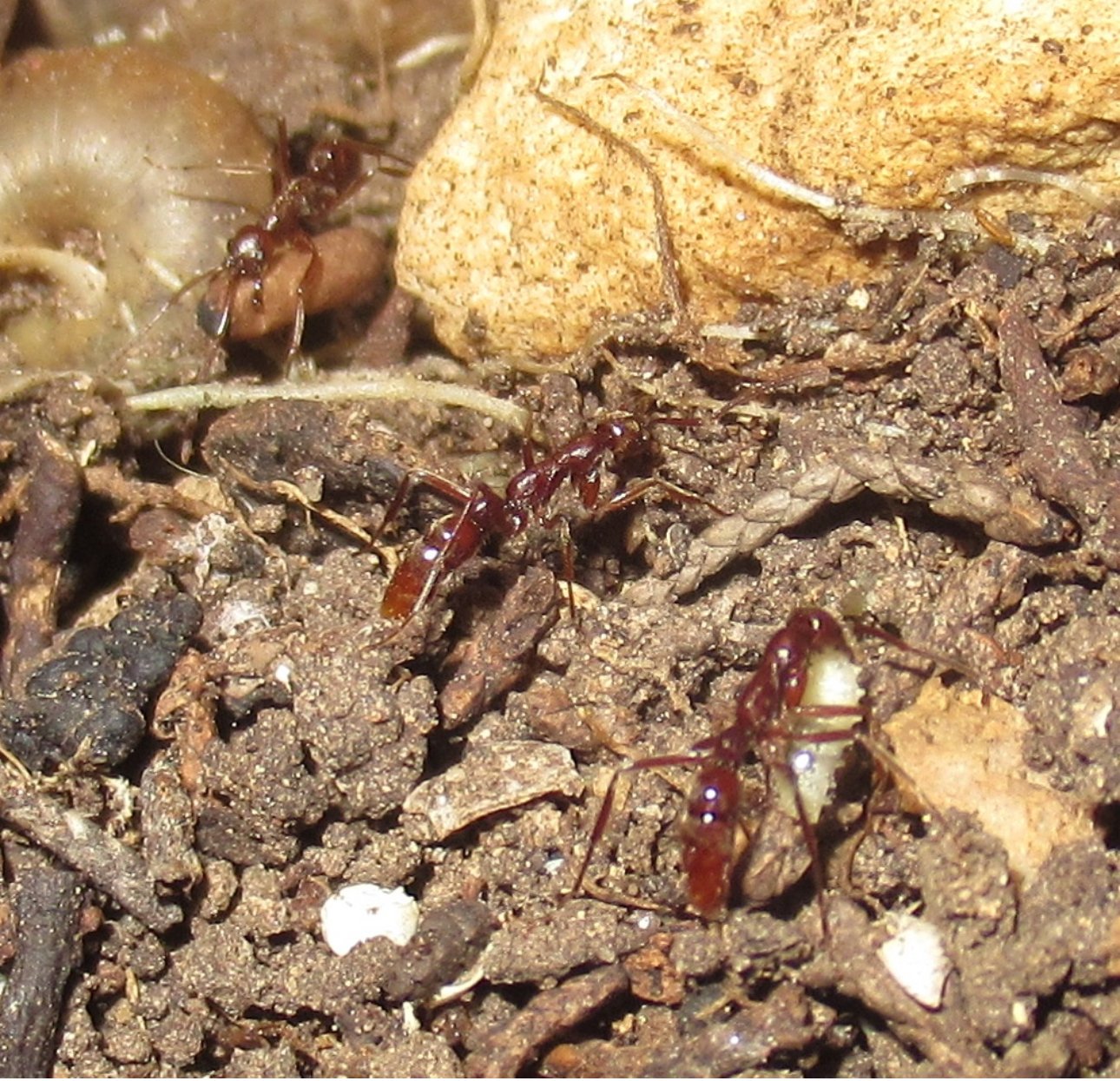Leptogenys elongata colony - 1queen 10-15 workers and brood
In Texas L. elongata occurs at low elevations with relatively moist habitats, where its prey, terrestrial isopods, can be found (Cockendolpher and Francke 1990). Wheeler (1904) reports that there is a single queen in each colony and that additional queens are forced out, but does not mention that colonies fission. He seems to suggest that virgin queens wander about on their own until fertilized by wandering males. The queen has a more enlarged gaster and a lower petiole than the workers (Wheeler 1904). The prey, based on middens at nest, seems to be almost exclusively terrestrial isopods (Wheeler 1904).
Available to Texas residents only
In Texas L. elongata occurs at low elevations with relatively moist habitats, where its prey, terrestrial isopods, can be found (Cockendolpher and Francke 1990). Wheeler (1904) reports that there is a single queen in each colony and that additional queens are forced out, but does not mention that colonies fission. He seems to suggest that virgin queens wander about on their own until fertilized by wandering males. The queen has a more enlarged gaster and a lower petiole than the workers (Wheeler 1904). The prey, based on middens at nest, seems to be almost exclusively terrestrial isopods (Wheeler 1904).
Available to Texas residents only
In Texas L. elongata occurs at low elevations with relatively moist habitats, where its prey, terrestrial isopods, can be found (Cockendolpher and Francke 1990). Wheeler (1904) reports that there is a single queen in each colony and that additional queens are forced out, but does not mention that colonies fission. He seems to suggest that virgin queens wander about on their own until fertilized by wandering males. The queen has a more enlarged gaster and a lower petiole than the workers (Wheeler 1904). The prey, based on middens at nest, seems to be almost exclusively terrestrial isopods (Wheeler 1904).
Available to Texas residents only

